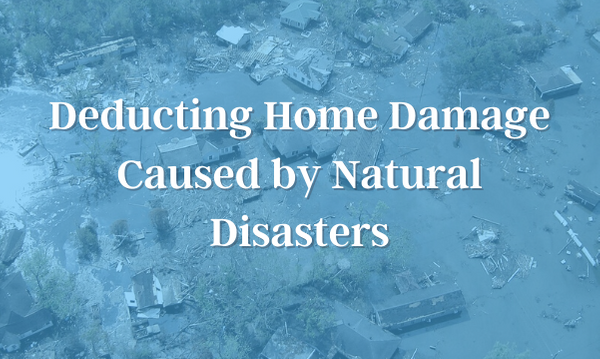Itwas a rough start to the year for Texans, who dealt with highly unusual temperatures, weather conditions and rolling blackouts that quickly became dangerous. Many people’s homes suffered significant damage as a result of the weather conditions.
In the wake of such circumstances, it’s important to take advantage of any type of financial relief you can get. One avenue is to search for deductions you might qualify for if your home was affected by a natural disaster.
Here’s a quick overview of what you need toknow about deducting natural disaster damage.
Federally declared disasters
Through tax year 2025, homeowners are only able to qualify for casualty loss deductions if those losses occurred due to a federally declared disaster. Before 2018, any losses incurred due to fires, vandalism, floods, storms, earthquakes or other such events could be written off as casualty losses, but that was changed under the Tax Cuts and Jobs Act that went into effect that year.
Now, the President can make two types of disaster declarations: emergency declarations and major disaster declarations, both of which qualify for the casualty loss deduction. Emergency declarations can only be made upon request of a state governor, with the President then determining the amount of federal assistance to be provided. Major disasters can be declared unilaterally by the president for any event causing severe damage.
The good news is many counties in Texas were coveredunder a federally declared disaster for the winter storms, meaning there are millions of Texans who will be able to write off casualty losses resulting from them.
The scope of casualty deductions
There are some limitations to what you can deduct due to disaster damage. Only losses not covered by insurance will quality for casualty loss deductions. If all of your damage was covered, you do not get any deduction.
In addition, there are significant limitations to deductions for casualty losses to personal property. You are only allowed to deduct the amount of casualty losses that exceed 10 percent of your adjusted gross income for that year, and you must also subtract $100 from every casualty loss you suffered.
So, for example, if you have an adjusted gross income of $100,000 per year, only the losses that exceed $10,000 can be deducted. If you suffered $20,000 of uninsured damage, only $10,000 can be accounted for in your deductions.
Casualty loss deductions are also based on the decline in property value. How much you deduct, then, depends on the extent of the damage. If your property was completely destroyed, the deduction will be larger than if the damage was repairable.
Most of the time, casualty losses from a disaster will be deductible for the tax year in which that casualty occurred. However, because this Texas weather happened so early in the year, many Texans had not yet submitted their tax returns. You are allowed to treat the loss as having occurred in 2020 so you can deduct it on your 2020 tax return, or submit an amended return if you already turned in your 2020 return so you can get the assistance you need now and add it to your refund.
For more information about disaster deductions, contact our tax preparation team at MCG Solutions.

